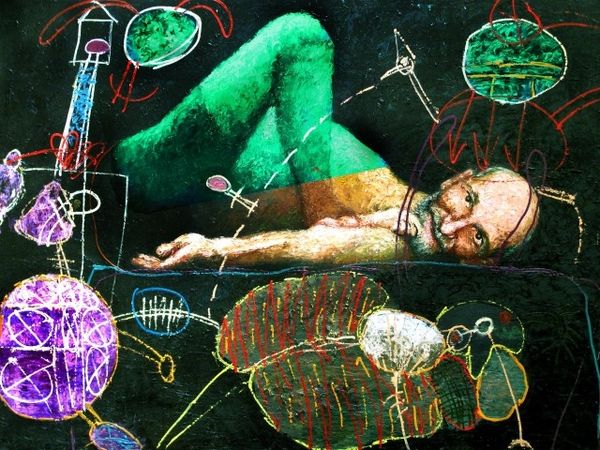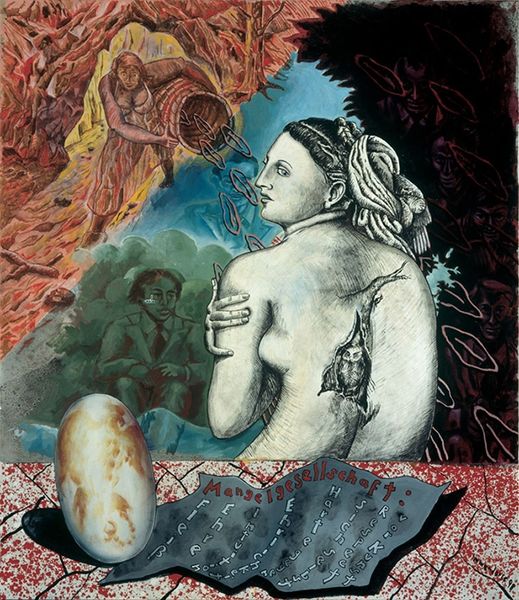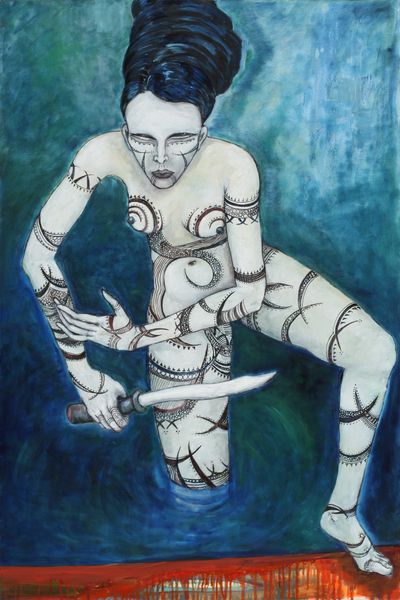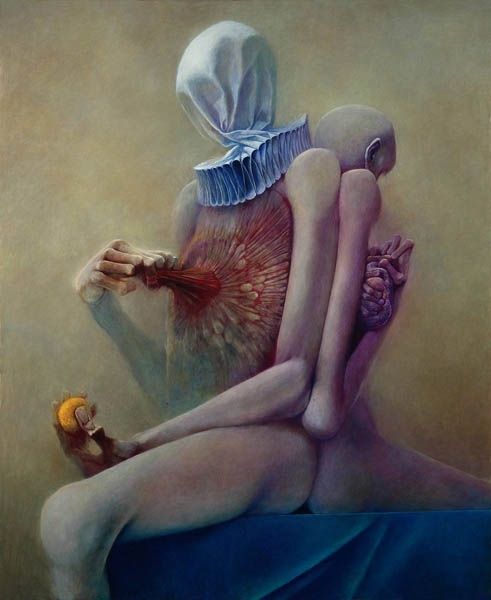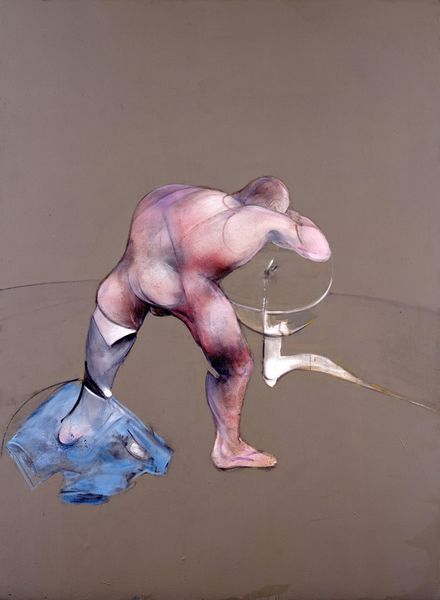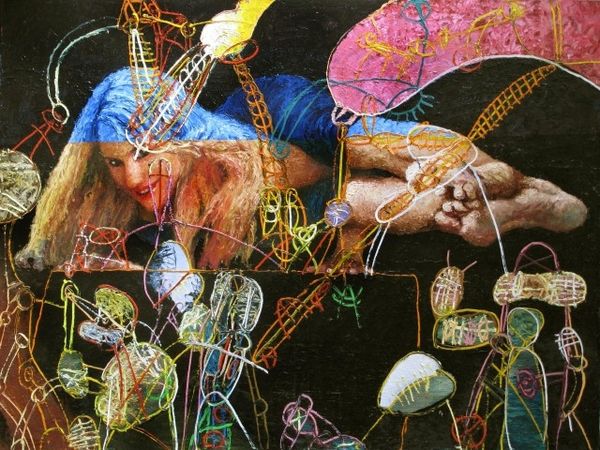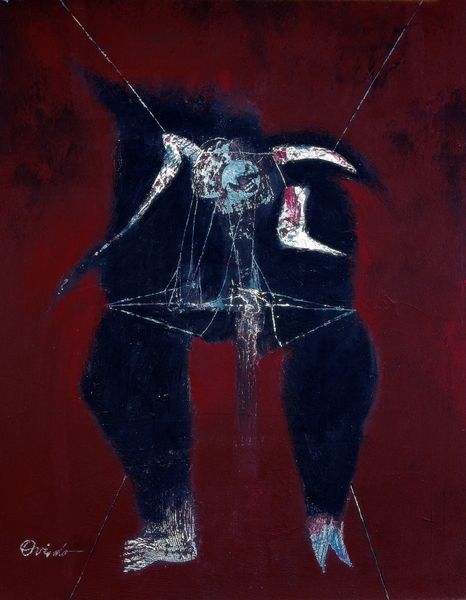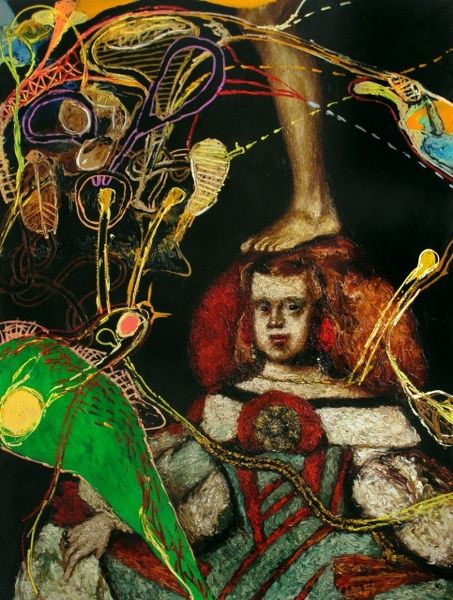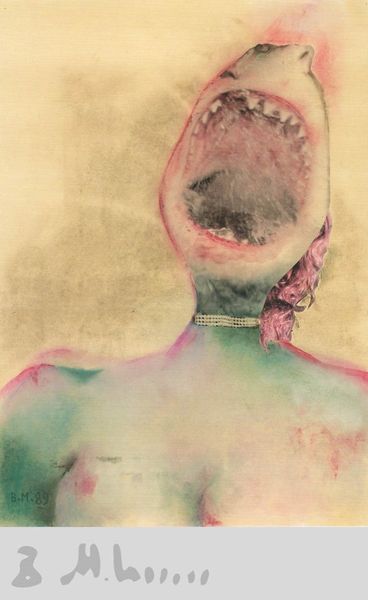
painting, oil-paint
#
portrait
#
contemporary
#
painting
#
graffiti art
#
oil-paint
#
street art
#
painted
#
figuration
#
oil painting
#
neo expressionist
#
acrylic on canvas
#
neo-expressionism
#
urban art
#
mythology
Copyright: Alexander Roitburd,Fair Use
Curator: Alexander Roitburd’s oil on canvas painting, “Psoy,” created in 2009, strikes me as quite provocative in its visual language. The combination of portraiture and these almost graffiti-like elements… What's your take? Editor: Overwhelming! There's so much happening. My eye struggles to find a focal point amid this vortex of figuration, abstract geometries, and lines that attempt to bind these compositional layers. I see the tension the artist creates between raw emotional vulnerability and the almost clinical diagrammatic. Curator: That tension feels key to understanding Roitburd’s artistic stance, I think. Roitburd engages here with mythology and expression, but it also functions as social commentary. The very name "Psoy" likely invokes not only an identity but an intellectual posture, reflecting perhaps counter-cultural leanings and musical preferences within post-Soviet society. Editor: I notice how the subject's gaze, though direct, has an intangible, haunting feel due to the thick, uneven paint application of the body. Do you think the dark ground strategically pushes the lighter skin forward, further adding to this sense of a troubled or fractured mind? Curator: I'm inclined to agree. Note too the circles resembling brains or celestial orbs, all crisscrossed and wired as though mapping ideas. Then there is also that red dot. Together, the effect on the viewing public must generate unease... I also imagine it could evoke critical interpretations surrounding censorship. Editor: This fusion of graffiti, street art sensibilities, and neo-expressionist techniques fascinates me! Roitburd's deliberate orchestration seems to suggest that meaning exists not in the depiction itself but rather in that jarring, somewhat destabilizing impact on the viewer. Curator: The historical framework enriches what we can consider "urban art" and portraiture. To engage this work fully, as observers, we need to investigate art's intersection within shifting sociopolitical contexts that simultaneously create meaning and the need to speak it aloud in defiance. Editor: You are right to bring it back to its original setting... a fitting ending to my engagement with a confusing painting. Thank you! Curator: I agree! These juxtapositions certainly open dialogues—dialogues that must push outside aesthetics to have a long afterlife!
Comments
No comments
Be the first to comment and join the conversation on the ultimate creative platform.

